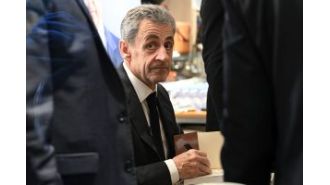In Elkhart, Indiana, Another Conviction Gets Tossed. The Star Witness Was Hypnotized, a Fact the Prosecutor Concealed.
The prosecutor who failed to disclose the use of hypnosis is now a judge. He knew the hypnotist from the Kiwanis Club.
A federal appeals court has overturned an attempted murder conviction in Elkhart, Indiana, saying a prosecutor concealed “explosive” evidence that the state’s sole eyewitness had been placed under hypnosis prior to trial, throwing into doubt the witness’s reliability.
The court’s opinion, issued 25 years after the defendant, Mack Sims, was convicted, is the latest rebuke of Elkhart’s criminal justice system, which has been the subject of an ongoing investigation by the South Bend Tribune and ProPublica.
The prosecutor who failed to disclose the hypnosis, Charles C. Wicks, is now an Elkhart Superior Court judge, presiding over felony and misdemeanor cases.
Sims was arrested in November 1993 on suspicion of shooting Shane Carey, a security guard sitting in his car. Police said they found Sims about a half-hour after the shooting, crouching behind a nearby trash bin. In 1994, Sims was convicted in a jury trial of attempted murder and sentenced to 35 years in prison. He’s currently at Westville Correctional Facility, in the state’s northwest corner. No physical evidence linked Sims to the shooting. The state’s case hinged on Carey’s identification of Sims as the shooter.
Under a 1963 U.S. Supreme Court case, Brady v. Maryland, prosecutors must disclose evidence that could be viewed as favorable to the defense. When Sims stood trial, Wicks, the case’s prosecutor, did not inform the defense that he had referred the victim to a hypnotist. The hypnotist was a physician’s assistant Wicks knew from the Kiwanis Club.
Courts generally frown on testimony from witnesses who have undergone hypnosis, because the practice often leads to an increase in false memories, alongside any legitimate improvements in a person’s recall. The Supreme Court has warned that a person under hypnosis is vulnerable to “confabulation,” filling gaps in the memory with fantasy, and to memory “hardening,” which increases a person’s confidence in both accurate and inaccurate recollections.
“Given the well-known problems that hypnosis poses for witnesses’ memories, we can be confident that Carey’s identification testimony would have been subjected to withering cross-examination,” the federal appeals court wrote in a 2-1 opinion. “The prosecution’s case against Sims depended completely on Carey’s credibility, which the suppressed hypnosis evidence would have severely undermined.”
Wicks declined to comment through an assistant Monday, saying that in his current position as a judge, he could not discuss how Sims’ prosecution had been handled.
In Sims’ case, the victim’s hypnosis was not publicly revealed until 2012, while Sims was seeking a new trial. During a hearing in Elkhart Superior Court, then-prosecutor Graham Polando disclosed a conversation he had with Wicks — by then a judge — prior to the hearing.
Wicks told Polando that “the victim in this case identified the … defendant, Mr. Sims, only after hypnotism,” Polando said in court. What’s more, according to the federal appeals court opinion, Polando said Wicks “asked me not to disclose what he told me” about Carey’s hypnosis.
When called to testify during the hearing, Wicks said he did not remember telling Polando the victim could identify Sims only after being hypnotized. Wicks said he did not disclose Carey’s hypnosis to the defense because Carey had “never wavered” in his identification of Sims as the shooter, even before he was hypnotized.
But at trial and on appeal, Sims’ lawyers challenged the reliability of Carey’s identification even without taking into account the hypnotism. Carey testified that he had glass in his eye after the shooting, and that when shown photos after surgery, he was “real groggy.” Some details in Carey’s initial description of the suspect did not match Sims’ appearance when he was arrested.
The investigation of Sims has parallels to the prosecutions of Keith Cooper and Christopher Parish, two men wrongly convicted in Elkhart of a 1996 robbery in which a man was shot and seriously wounded. Parish had his conviction overturned on appeal and the charges against him dropped. Cooper received Indiana’s first gubernatorial pardon based on innocence.
In the Cooper and Parish cases, key investigative records went missing, including a photo lineup that was shown to the victim. In the Sims case, likewise, at least one photo lineup shown to the victim was not documented or preserved, according to court records. In overturning Sims’ conviction, the federal appeals court noted the investigation’s patchy documentation, writing that “gleaning from the record precisely when photographic lineups were conducted and their result is difficult.”
Attorneys for Cooper and Parish alleged that police engaged in suggestive lineup procedures while asking eyewitnesses to identify the robbers. Sims’ attorneys alleged the same; in the 1994 trial, the victim testified that the night he was shot, police came to the emergency room and showed him a single photo of a suspect, a move the defense argued was so suggestive as to taint any subsequent identification. A detective testified that Carey was shown multiple photos that night, not just one.
In the Cooper and Parish case’s aftermath, the city failed for more than a decade to disclose records that detailed why the case’s lead detective was later forced to resign. (He engaged in sexual misconduct with an informant, according to those records.) In the Sims case, the use of hypnosis on the star witness remained hidden for more than a decade.
The key detective in the Cooper and Parish case had a lengthy disciplinary record, according to his personnel file. The detective in the Sims case, John Faigh, had a disciplinary record that was even longer.
In October 1993, one month before Sims was arrested on suspicion of shooting the security guard, Faigh was suspended for a day: He had arrested a man for child molestation when, by statute, the purported victim was too old to qualify as a child. “The simple fact that a juvenile detective does not know the age limits which constitute child molest is just totally embarrassing,” a captain wrote in a disciplinary letter.
By the time Faigh retired from the Police Department in 2010, he had been disciplined at least 20 times, according to his personnel file. One time he fired his shotgun at a fleeing vehicle, hoping “he would hit either the radiator or tire,” a disciplinary report said. For endangering the driver and a passenger, Faigh was suspended for five days and removed from the SWAT team. Faigh’s personnel file also documented repeated errors while preserving or submitting evidence; once, he failed to properly seal and catalogue evidence collected at a hospital from a rape victim, according to personnel records.
Faigh did not return messages left Monday requesting an interview. In 2009, when questioned by the city’s civilian oversight board about his disciplinary record, Faigh said, “In no manner have I ever disgraced the Elkhart Police Department, myself, or my credibility.”
Wicks, the prosecutor in Sims’ trial, also figured in Parish’s appeal, opposing a request for a new trial. After an evidentiary hearing in 2004, Wicks filed written arguments that contained one misstatement of fact after another. A state appeals court later granted Parish’s request.
In the Sims case, an Indiana deputy attorney general, while opposing a new trial, conceded in oral arguments that Wicks should have disclosed the use of hypnosis. During those arguments, in November, two of the federal appeals court judges quizzed the deputy.
One judge asked her if she had ever “come across a more calculated or deliberate violation of Brady than this.”
Another judge asked why Wicks would have suggested hypnosis unless he had concerns about the witness’s ability to identify the defendant.
After a five-second pause, the deputy attorney general said, “I don’t, I don’t have an answer to that, your honor.”
“I bet you don’t,” the judge said.






